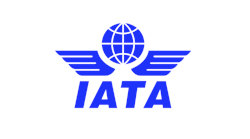For many years we have heard and read about the upcoming shortages for aircraft mechanics because the “Baby Boomer” generation is retiring. We have also heard that the new mechanic lacks some of the skills required to fill this void because they do not have all the experience and knowledge a seasoned mechanic has. So I ask, “What is being done to pass on these skills to the upcoming mechanics?”
To answer that I would like to address what fellow future aircraft mechanics in other countries have a chance to do. Some countries are using a proven educational system that incorporates apprenticeships with their airlines.
Apprentice Programs Used in Airline Industry
British Airways uses several “learn and work” apprentice programs for a wide variety of positions: aircraft engineering, (aircraft mechanic) is one of them. This three-year program will lead an apprentice to many qualifications including an EASA Aircraft Maintenance Category A License.
Lufthansa Technik is celebrating its 60-year anniversary of apprenticeships! Is there a U.S. airline that can say that? Taking a quick glance at Lufthansa’s web page for its apprenticeship program, one will see a list of openings in different cities and countries in an assortment of fields including aircraft mechanics.
Next, let’s go “down under” to Qantas Airways. There you will find an apprenticeship program for avionics and aircraft mechanics which could lead the individual to become a licensed aircraft maintenance engineer (LAME).
Over in the Middle East, Emirates Airline and Group also has a great apprenticeship program. Emirates former executive vice chairman, Maurice Flanagan, has stated, “We achieve what we do because of our people. We choose them very carefully, and just as important, they chose us very carefully.” Its apprentices go on to earn a GCAA/EASA Part 66 “A” license.
Looking in our own back yard here in the United States, I did a search on the American Airlines web page for an apprenticeship program. All that popped up was a link to an International General Rules AA1, “Hmmm, no apprentice program there?”
A quick search on Delta’s web page resulted in “no results found” for an apprenticeship program. Continuing my research, I found an article posted Dec. 18, 2015 that told of a San Diego Miramar College student who joined Delta Air Lines on a paid internship. Well so far the U.S. airlines have one aircraft mechanic in a paid internship but no true apprenticeship program.
Next, I found an article dated Oct. 1, 2007 by Mitch Muller titled “Commercial: Into the Blue: JetBlue Charts New Territory with Apprentice Mechanic Program.” I thought, “This looks promising” even though it was dated from 2007. I headed to the web page www.jetblue.com and I did notice that it had a tab for internships; however, I did not see any apprenticeships being offered. I’m starting to think to myself, “Maybe there are some apprenticeships for aircraft mechanics in the United States but they are incorporated through the individual company managers and not handled on a national scale.
Researching the International Airlines Apprenticeship Programs was just a click of the tab on each company’s web page. It was just that easy. In fact, I was pleasantly surprised how much information and details they went into about their programs. Nothing like that from the U.S. domestic, major or regional airlines I searched. Of course, if you have a dual vocational training system like Germany has, I can see why Lufthansa Technik has such a great apprenticeship program. Would some type of dual vocational training system work here for our upcoming aircraft mechanics? I believe the answer is, “Yes.” Another industry that does have a great apprenticeship program is the shipyard industry like the one located in Newport News, VA, called The Apprentice School. This school provides the much needed supply of qualified individuals to maintain and build our military fleet of ships. Huntington Ingalls Industries, the military contractor that owns Newport News Shipbuilding, has a plan for its upcoming needed supply of qualified and skilled workforce. Does the aviation industry have a plan or is there even a concern a plan is needed?
You might be saying right now “Well of course this shipyard has an apprentice program. It is probably subsidized by the government. Airline companies would have the total cost rest on their shoulders which is not feasible at this time, or is it?” I would not disagree with part of that statement. The shipyard is a national defense situation. But I ask, “When is it going to be possible to start an apprentice program for aircraft mechanics? When all the baby boomers retire?” All these years we have heard there is going to be a shortage of skilled workers in aviation. Is there going to be one?
Government Support Programs Available
According to an article written by Angela Hanks and Ethan Gurwitz dated Feb. 9, 2016 “How States Are Expanding Apprenticeships,” President Obama has dedicated $175 million to an American Apprenticeship grant initiative that will help 46 public-private partnerships create more opportunities for workers and employers to participate in apprenticeships. This is a good first step because skilled workers are needed in many industries. According to the Center for American Progress report, “Training for Success,” the United States Department of Labor Office of Apprenticeship administers the registered apprenticeship system and has regional and local offices in each state.
Funds are directed to the states to invest in an apprenticeship program which in turn would give some credence for employer participation. Some states are doing very well in helping their workforce get into an apprenticeship program which pays dividends back helping their workforce become skilled and valuable to society. Minnesota has recently adopted a road map for their apprenticeship program patterned after the German dual vocational training system. The more I research and learn about apprenticeship programs I am brought back again and again to the German system. Numerous countries and U.S. states are attempting to mimic the German success and adapt it to their local needs.
With the initiatives taken by the Administration this year, are we seeing a change in how we should educate and train some of the next generation technical workers? With college debt at an all-time high in our country perhaps reallocating some of those government loans to apprentice programs may assist in lowering individual debt and give our country a much needed skilled workforce at the same time. No doubt apprenticeship programs in the United States is underused compared to other countries.
An Apprenticeship Program in the U.S.
One of the benefits of an apprenticeship program is that it helps the apprentice financially during their academic and hands-on training. One such apprenticeship program that is alive and well is with the Fighter Factory located in Virginia Beach, VA. The Fighter Factory has a relationship with the local aviation maintenance technician school, Aviation Institute of Maintenance, and when needed it interviews current students for its apprenticeship program. In this program apprentices earn a wage, work alongside professional aircraft mechanics during the day, and then go to school for six hours at night. Tom “TK” Kurtz, the general manager for Fighter Factory, states, “It is very rewarding to see the dedication that the apprentices have; presently we have four apprentices from the school.”
The Fighter Factory maintains one of the largest private collections of World War I and World War II era military aircraft in the world. They are all beautifully restored and are flown at the Military Aviation Museum’s air shows and flight demonstrations throughout the year. The Military Aviation Museum, including the Navy Hangar, Army Hangar, Fighter Factory, the WW I Hangar, and the Cottbus Hangar all on the same 110-acre property, is open to the public. Also there is a 5,000-foot private grass runway used by the Military Aviation Museum to maintain, display, and fly the restored aircraft.
The Fighter Factory has realized that to keep these Warbirds in top condition it needs skilled aircraft mechanics and it is doing something about it now by having a relationship with its local aviation maintenance school.
What if this same approach that the Fighter Factory is doing spread to other areas throughout the country in which local aviation companies had an apprenticeship program with their nearby aviation school?
I guess there would be larger supply of skilled aircraft mechanics to fill the upcoming “Baby Boomer” void, wouldn’t there?
Brad Groom is Director of Education, Aviation Institute of Maintenance, Cheseapeake, VA. He has a bachelor’s degree in education and is a FAA certified Airframe and Powerplant mechanic. He started his aviation career in 1977 while serving in the U.S. Air Force. For more information visit: www.aviationmaintenance.edu; www.FighterFactory.com; and www.militaryaviationmuseum.org.





